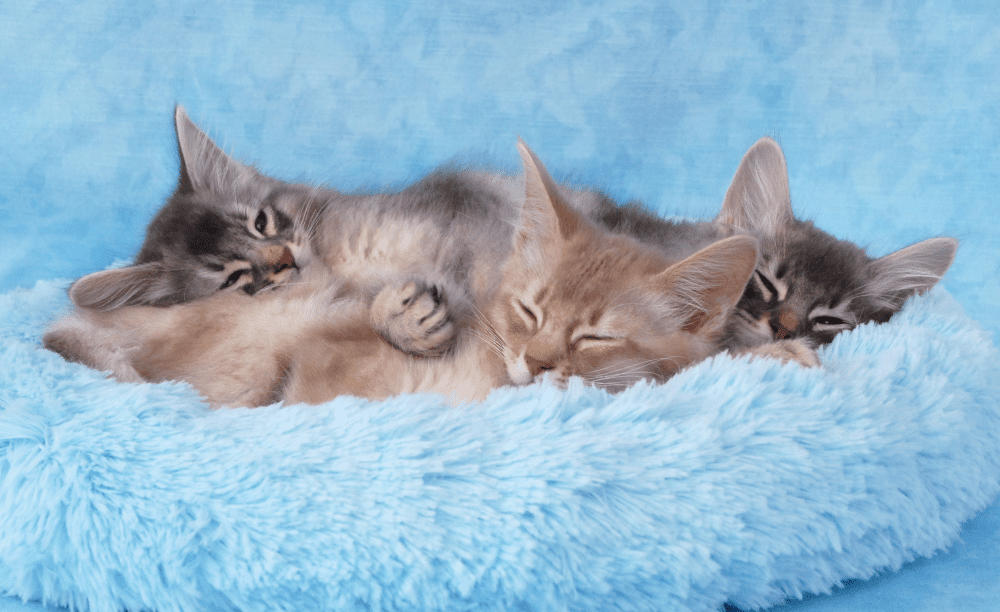Calling all cat owners: have you ever wondered if cats sleep with their eyes open? Perhaps you found your pet snoring while gazing empty-brained at the ceiling, or thought they looked a bit dead when you spotted them slumped with their glassy eyes staring right at you, only for them to bounce back to life. If you’re wondering “do cats sleep with their eyes open?”, the answer is yes, and the reason why is linked to a nifty bit of kit they have in their eyes as well as their passion for napping.
Back before humans domesticated them, the cats we call pets were wild animals highly adept at hunting, but they were also hunted themselves. This evolutionary history means they developed adaptations over time that helped them to stay alive, including sleeping with their eyes slightly open.
It might sound uncomfortable, but in doing this they can stay aware of their surroundings by still maintaining some degree of awareness of their surroundings without having to have their eyes fully open. If we were to try and do the same we’d end up with very dry, uncomfortable eyes – but this isn’t the case for kitties. Why? Thanks to their third eyelid.
This slightly freaky ocular feature is known as the nictating membrane and it’s found in several animal groups including birds, amphibians, fish, and mammals – but not primates (except in rare medical case studies). Cats have the top and bottom eyelid that we humans share, but tucked underneath is a third layer that swoops in from the inner eye sideways, sort of like an extra windscreen wiper for the eye.
Kittens sleep for around 20 hours a day, so it figures they’d try to stay at least slightly aware during that time. Image credit: Sarah Newton / Shutterstock.com
In a healthy cat, you won’t normally be able to see this nictating membrane, except for the odd occasion when your cat falls asleep with their eyes slightly open. The third eyelid plays a protective role during feeding as cats go face-first into predation, but it can also protect the eye while the cat snoozes by preventing dryness and acting as a small barrier should anything fall into their eyes while they’re asleep.
How wide open the eye is and how far across the nictating membrane passively sweeps has been linked in research to the two sleep stages cats go through: rapid eye moment (REM) and slow wave sleep, often called deep sleep. While a cat is conscious, the nictating membrane is kept open with a relatively small amount of effort that’s released when a cat is asleep.
Deep sleep was found to be more associated with a cat snoozing eyes-open and third eyelid on show compared to REM, but reports of nystagmic movements (eye twitching associated with REM) visible beneath the nictating membrane in a cat with open eyes have also been made.
Keeping one eye open to detect threats during sleep is something that’s also been suggested in birds. Research has found that during a specific stage of sleep, birds will keep the eye on the opposite side of the “awake” hemisphere of the brain open. Mallards studied could keep an eye open on the side they perceived to be the biggest predation risk, indicating that it’s a defense strategy should any predators come around while they’re sleeping.
Cats, especially kittens, sleep for a large portion of the day, starting in early life at around 18–20 hours a day and dropping to 12–16. It figures, then, that an animal who spends so much of its life unconscious would evolve to be able to stay wary even when fast asleep.
And it comes with the benefit of looking really, really funny.
Source Link: Do Cats Sleep With Their Eyes Open?
